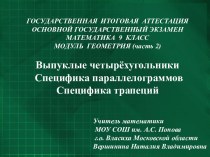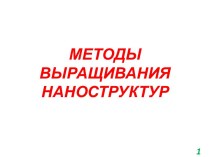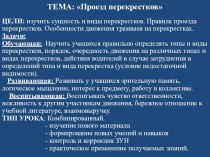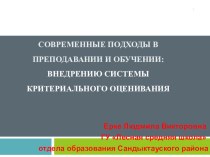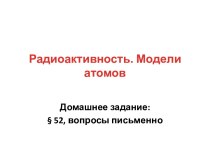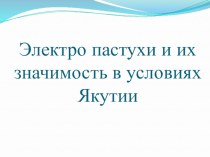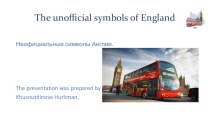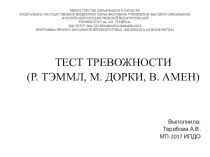- Главная
- Разное
- Бизнес и предпринимательство
- Образование
- Развлечения
- Государство
- Спорт
- Графика
- Культурология
- Еда и кулинария
- Лингвистика
- Религиоведение
- Черчение
- Физкультура
- ИЗО
- Психология
- Социология
- Английский язык
- Астрономия
- Алгебра
- Биология
- География
- Геометрия
- Детские презентации
- Информатика
- История
- Литература
- Маркетинг
- Математика
- Медицина
- Менеджмент
- Музыка
- МХК
- Немецкий язык
- ОБЖ
- Обществознание
- Окружающий мир
- Педагогика
- Русский язык
- Технология
- Физика
- Философия
- Химия
- Шаблоны, картинки для презентаций
- Экология
- Экономика
- Юриспруденция
Что такое findslide.org?
FindSlide.org - это сайт презентаций, докладов, шаблонов в формате PowerPoint.
Обратная связь
Email: Нажмите что бы посмотреть
Презентация на тему Курс “Логистика”
Содержание
- 2. Основное из Лекции 1Определение логистикиЭтапы развития логистикиЛогистический
- 3. Лекция 2. Методология в логистике. Закупочная логистика.
- 4. Методологический аппарат логистикиМетоды системного анализаМетоды теории исследований
- 5. 1. Анализ полной стоимостиучет всех экономических изменений,
- 6. «Айсберг» полных затратНеобходимы специальные знания и учет
- 7. 2. Моделирование в логистикеПрогноз поведения процесса или
- 8. МоделиВключают все характеристики объекта-оригиналаЧастичное подобие оригиналу
- 9. 3. Экспертные системыспециальные компьютерные программы, помогающие специалистам
- 10. 4. Показатели логистикиСредний запас на складе Зср1 -
- 11. 3. Доля запасов в обороте4. Затраты на
- 12. Функциональные области логистикиЗакупочная логистикаСкладская логистикаПроизводственная логистикаРаспределительная логистикаТранспортная логистикаИнформационная логистика Почему в России закупочная логистика развита слабо?
- 13. Закупочная логистикаНа тактическом уровне: ежедневные операции с
- 14. Цели службы снабженияУстанавливать взаимоотношения с поставщиками –
- 15. Вопросы закупочной логистикиЧто закупить?Сколько закупить?У кого закупить?На
- 16. Задачи закупочной логистики
- 17. Выбор поставщикаОбъявление конкурсаЯрмарки, конференцииПереписка, рекламные материалыКритерии:УдаленностьСроки выполнения заказовНаличие резервных мощностейКонтроль качестваКредитоспособность и проч.
- 18. Оценка результатов работы с поставщикамиРейтинг поставщиков
- 19. Спрос на одном участке цепи определяется спросом,
- 20. Поставки «Точно в срок»А) поставки ТВС Б) традиционная схема поставки
- 21. Сложности на пути к ТВСТребования потребителя к качествуСокращение степени диверсификацииУдаленность потребителяРасписание поставокРазмер партии и периодичность поставки
- 22. Метод быстрого реагированияТехнологии метода:Автоматическая идентификация штриховых товарных
- 23. Logistics strategy. Relationship approach to purchasing.
- 24. Components of internal analysis
- 25. Analysis of Internal Resources - The Value
- 26. Analysis of the External Environment: Porter’s 5
- 27. Strategy at the functional levelSource: Hill & Jones (2009): Theory of Strategic Management with Cases. South-Western.
- 28. Building Blocks of Competitive Advantage
- 29. The Triangle of Logistics Decision Making
- 30. Examples of Strategic Logistics Decision Making
- 31. Relationship marketing and network approach in marketing
- 32. Key points Transactions versus relationships.Trends driving relationships. Relationship marketing definitions.The domain and dimensions of relationship marketing.
- 33. Relationship marketing?Since 80s Relationship Marketing is one
- 34. Transactional Marketing (1)Emphasis on getting new customersShort-term orientationInterest in making a single saleLimited commitment to customers
- 35. Transactional Marketing (2)Research on customer needs to
- 36. Customer is a key in RMEmphasis on
- 37. DiscussionWhat are the main factors of RM
- 38. Trends driving relationshipsGlobalization of markets and organizations
- 39. Relationship Marketing is…Relationship marketing refers to all
- 40. Relationship Marketing is…The objective of RM is
- 41. Relationship Marketing DomainBusiness/customer partneringCompany relationshipsCatch-all category[Brodie et al., 1997]Database marketing
- 42. DiscussionWhat are the benefits of relationship development?What are the losses of relationship development?
- 43. General properties of relationshipsCollaborationCommitment, dependency and importanceTrust,
- 44. Supplier partnerships
- 45. OutlineThe core firm and its relationshipsPartnership driversPartnership
- 46. 1.1 Forms of relationships
- 47. 1.2 TerminologySupplier partnerships (Co-makerships, partnering etc.) –
- 48. 2.1 Make or Buy versus Core
- 49. 2.2 Grow of customer-supplier partnering agreements are
- 50. 2.3 The Structure of PurchasingPurchasingDaily PurchasingStrategic PurchasingInitiate
- 51. 2.4 Change of Product Scope Total deliveryOwn productionOutsourcing Market demands TimeNew technologyAlliances
- 52. 2.5 Core Competence Core Competence Make or Buy (Outsourcing) Alliances
- 53. 3.1 Advantages of partneringInterdependence reduces transaction costs
- 54. 3.2 Disadvantages of partneringThe risk of becoming
- 55. 4.1 Expanded model of partnership formation
- 56. 4.2 Model of relationship development process [Wilson,
- 57. 4.3 The ending of business relationshipbreak-up (Baxter,
- 58. 5.1 Power and dependencyPower imbalance results in
- 59. 5.2 Examples of interaction functions that can
- 60. 6. Purchasing strategy (1)Shall we purchase the
- 61. 6. Purchasing strategy (2)Are our suppliers integrated
- 62. 6. Purchasing strategy (3)Do we monitor and
- 63. Скачать презентацию
- 64. Похожие презентации
Основное из Лекции 1Определение логистикиЭтапы развития логистикиЛогистический материальный потокЛогистические операцииЛогистические системыУправление цепочкой поставок (SCM)Влияние глобализации на SCMЦенность/доб.стоимость в логистике
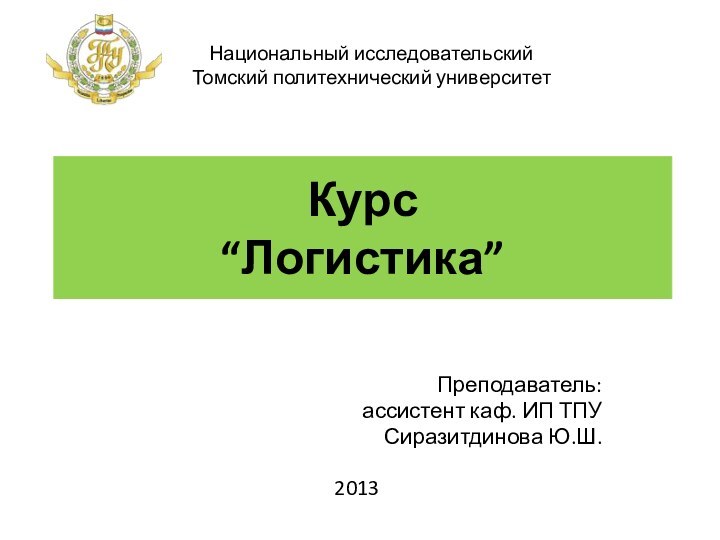
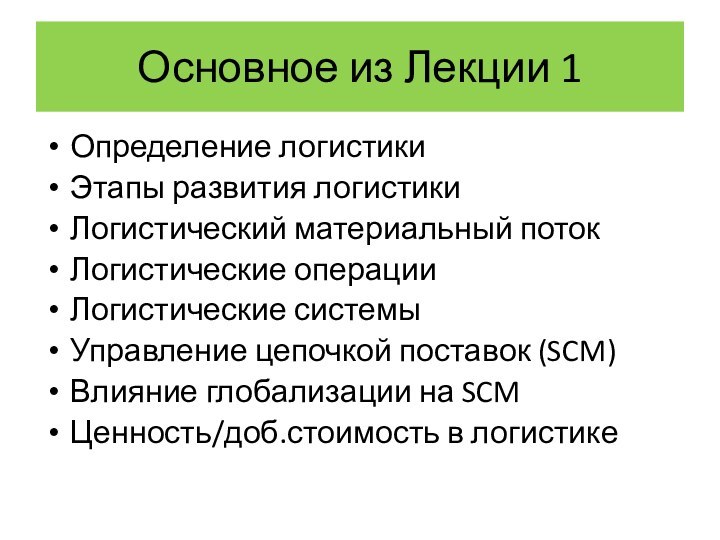
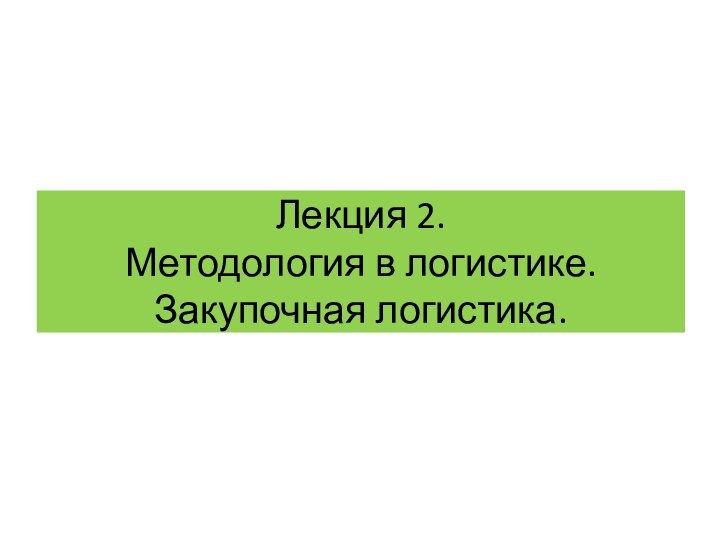
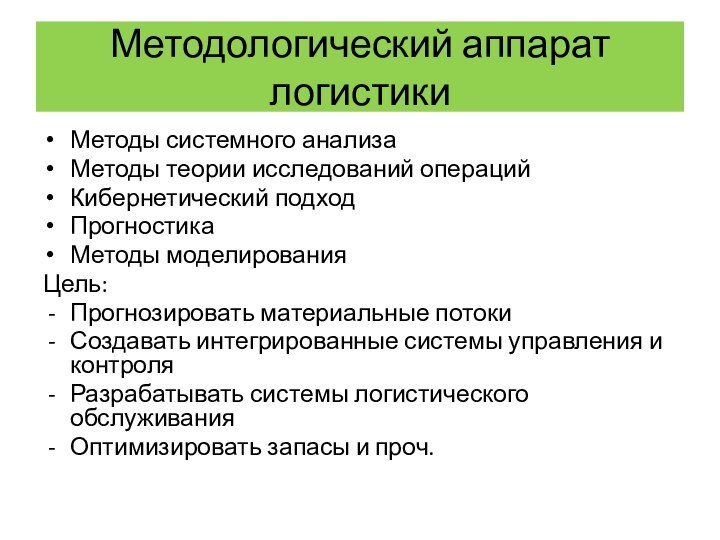
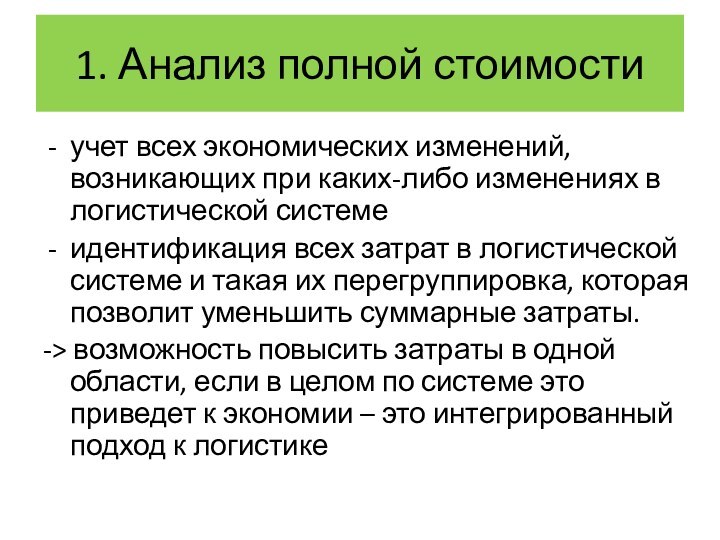
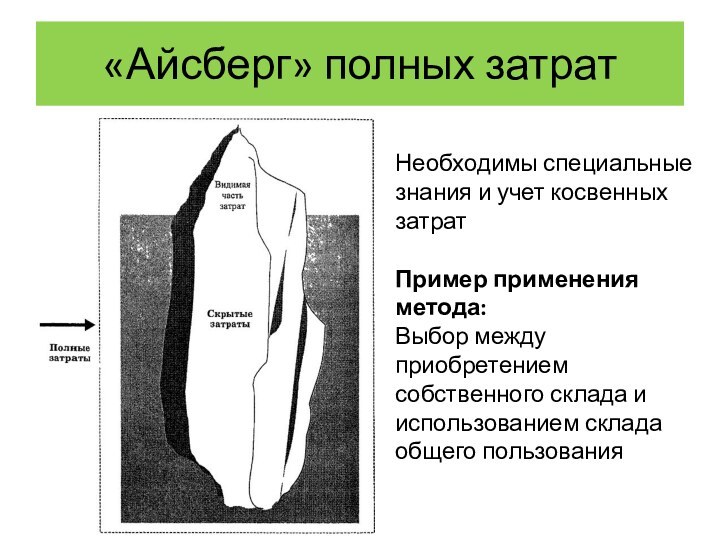
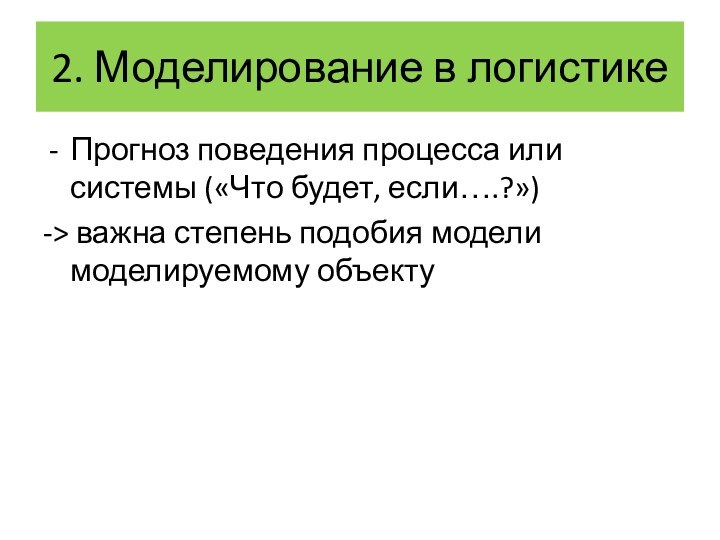
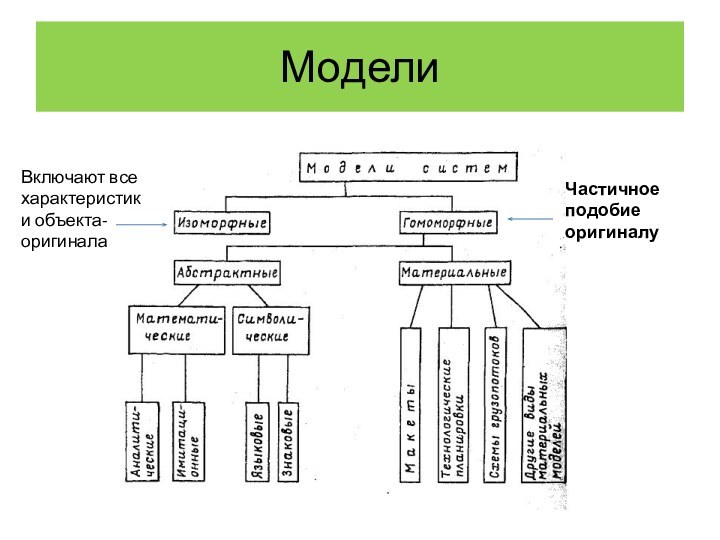
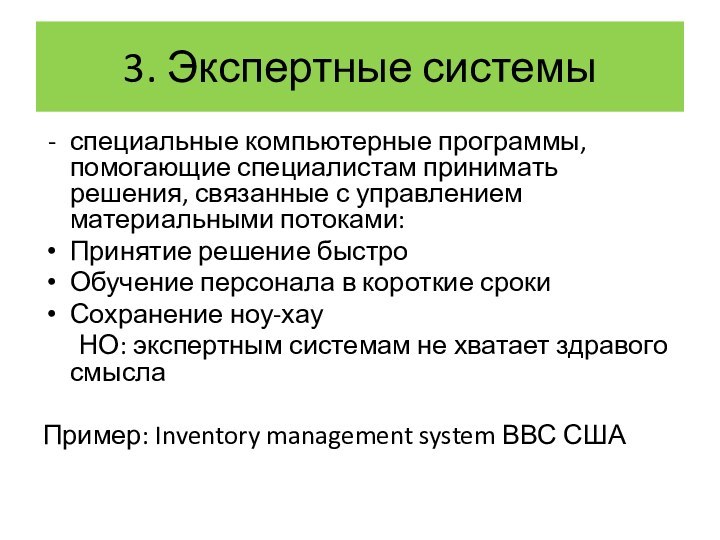
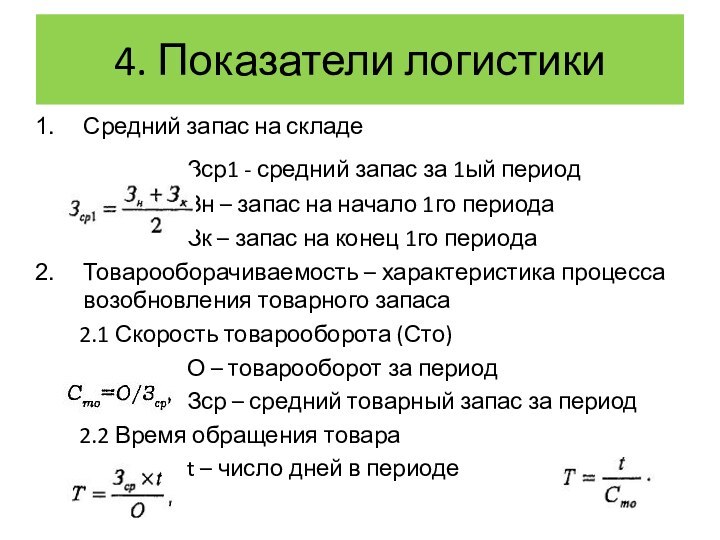

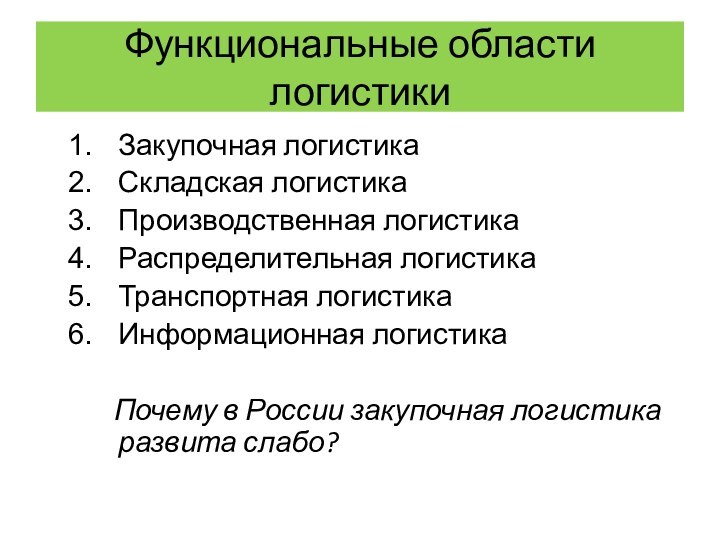
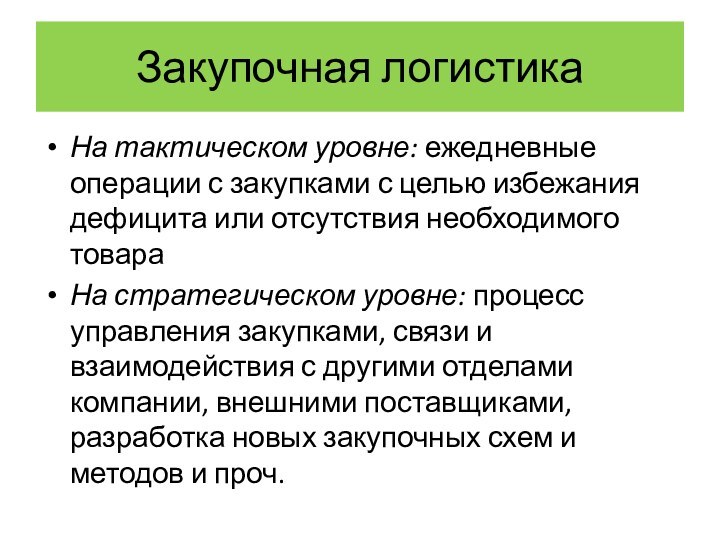
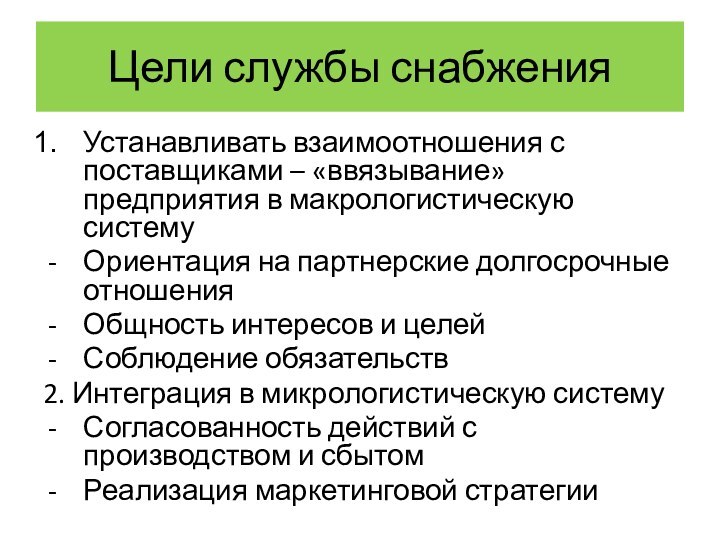

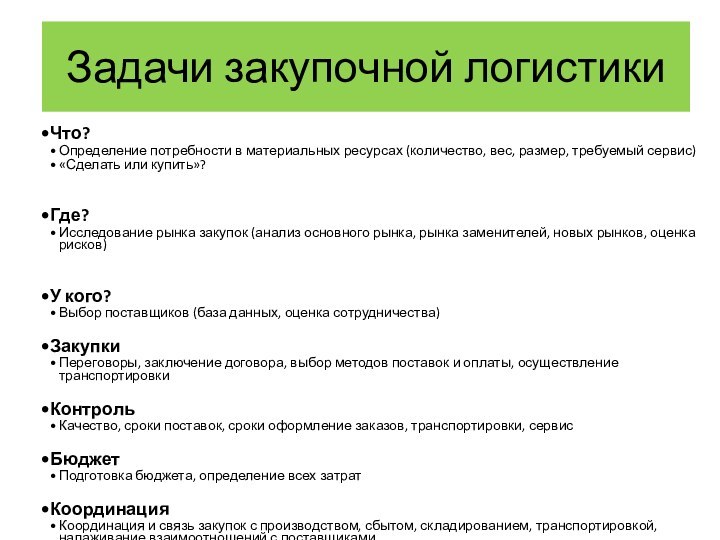
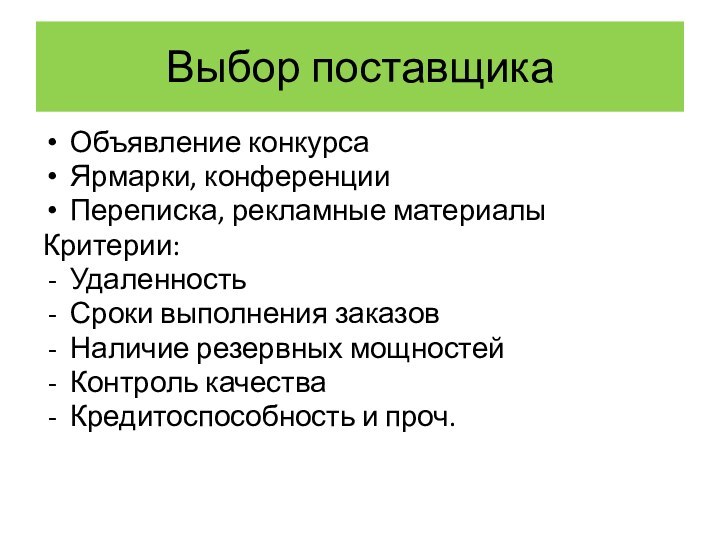
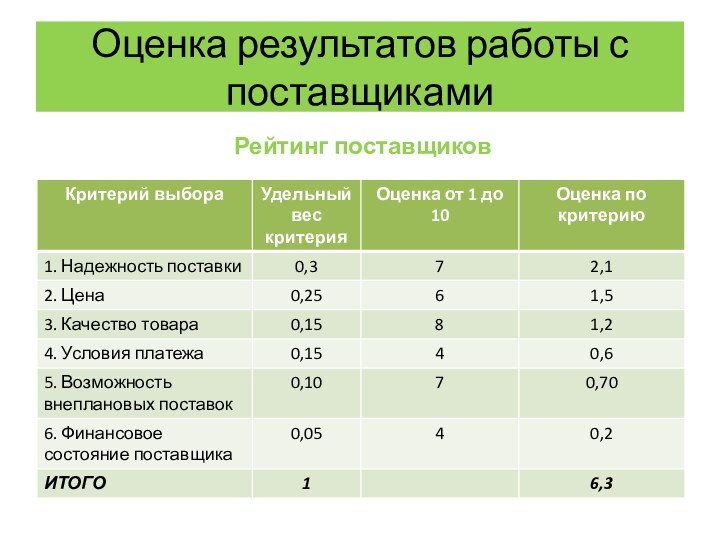
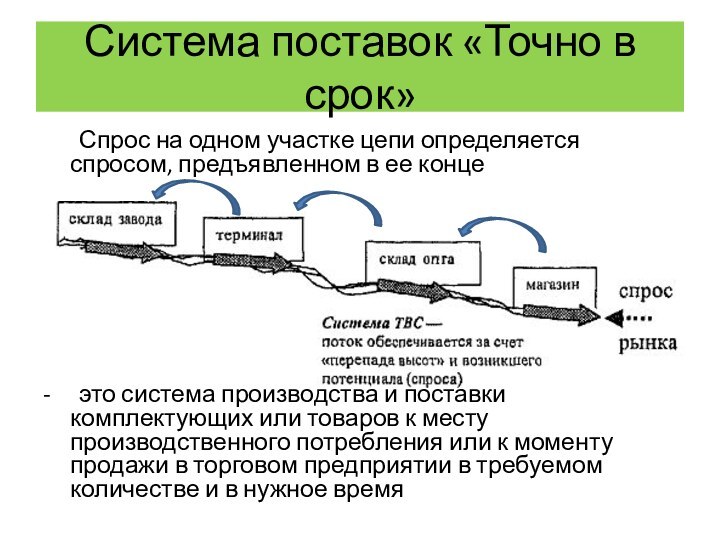
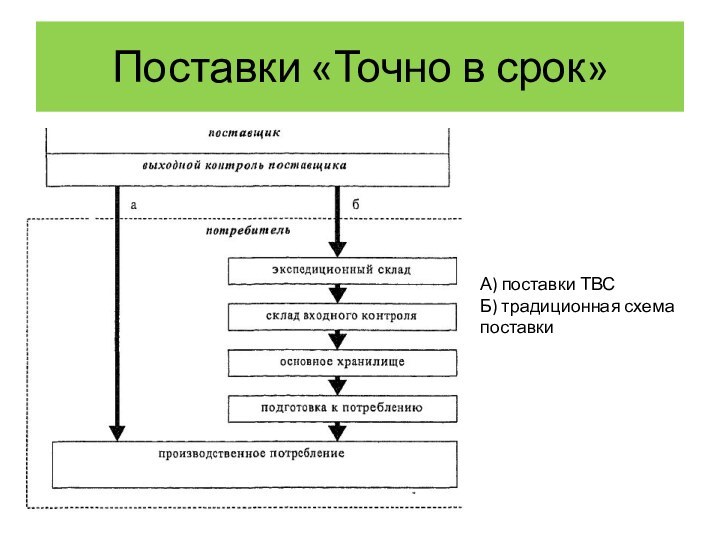
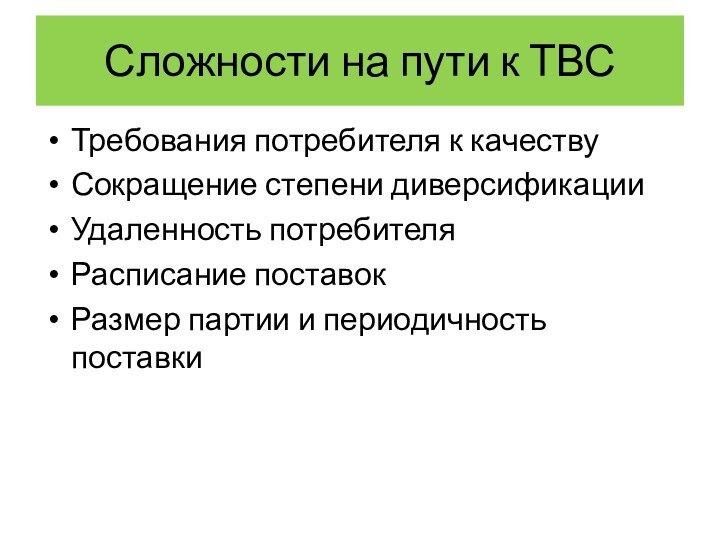
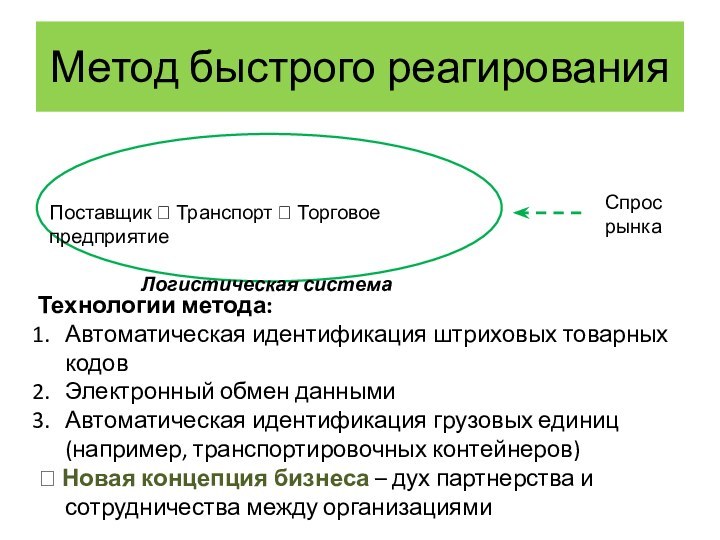
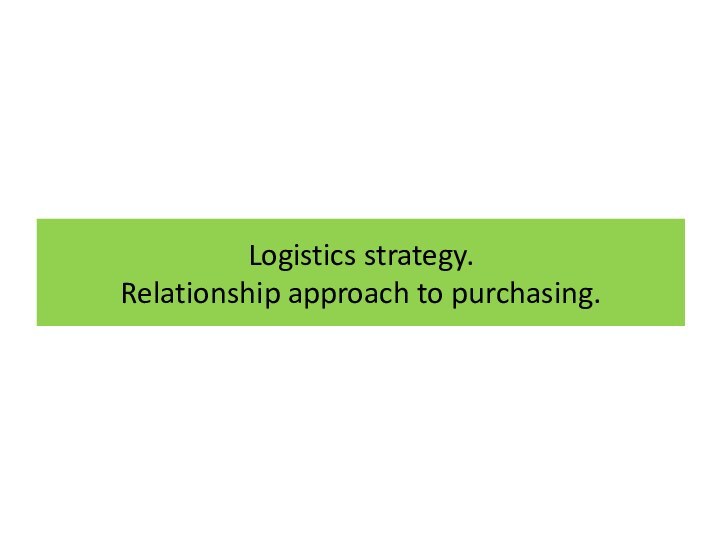

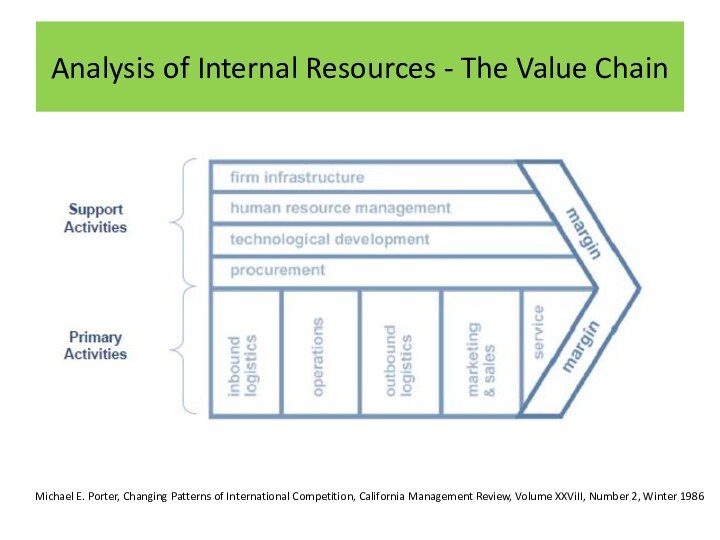
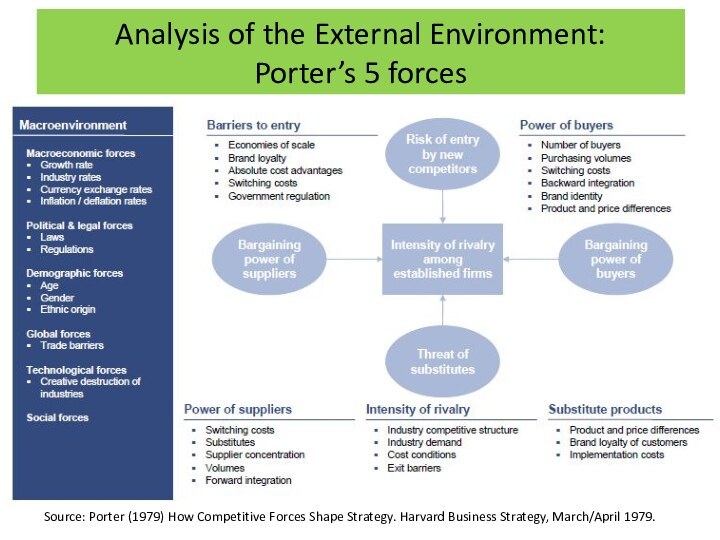
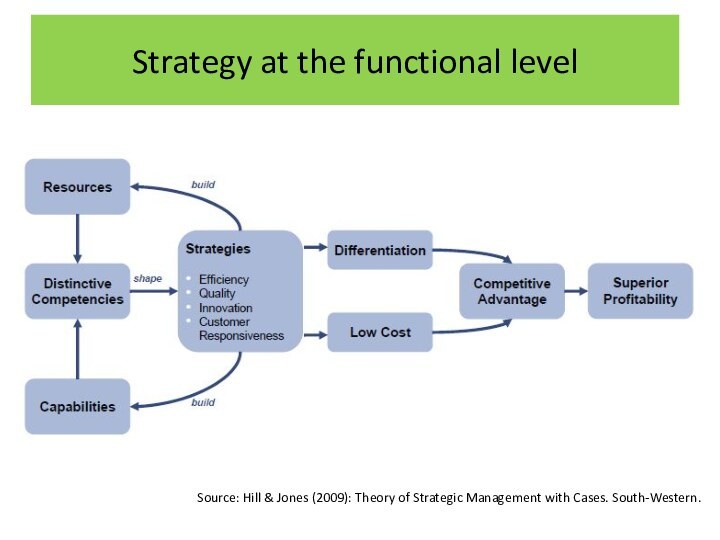
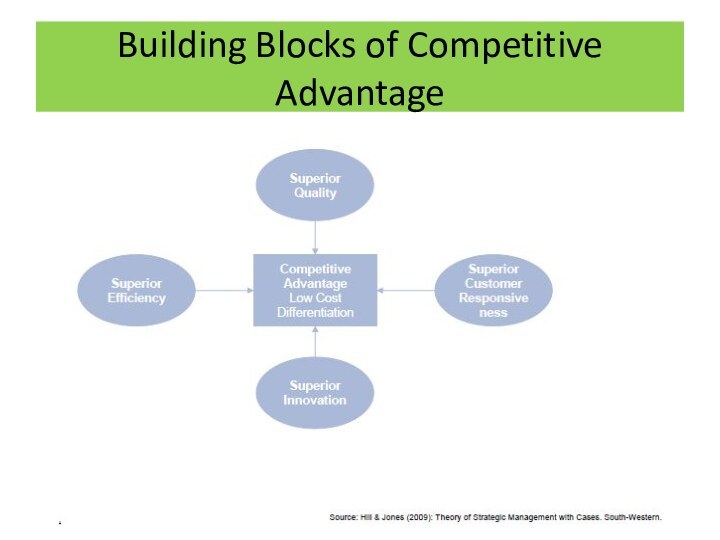
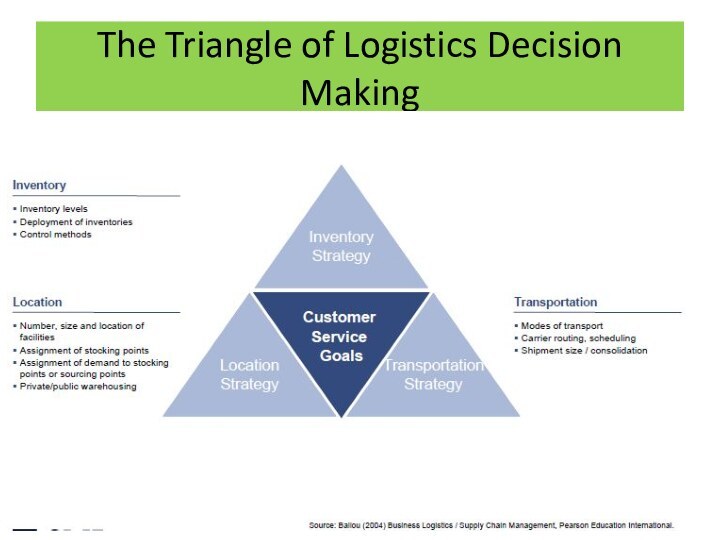
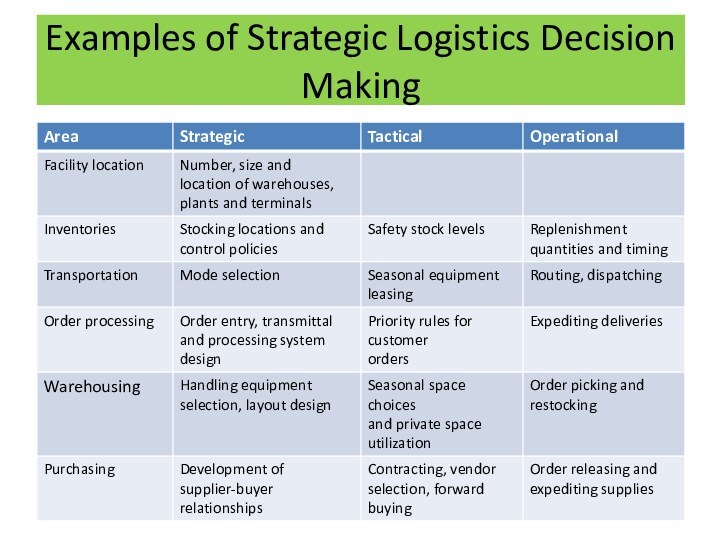
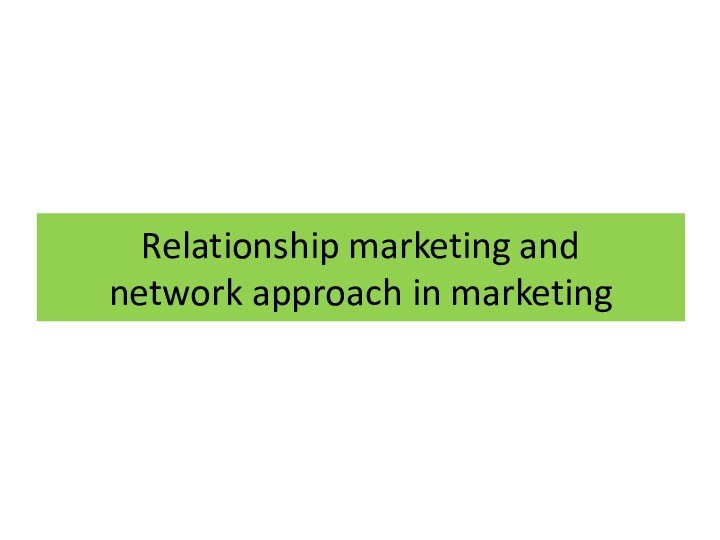
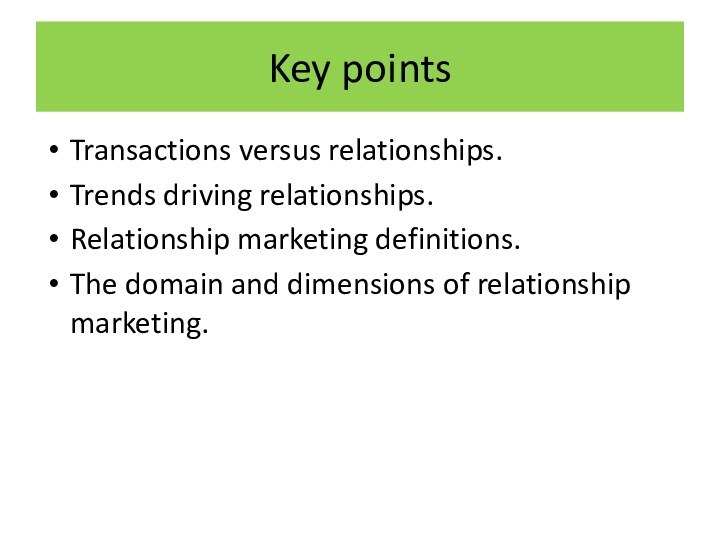
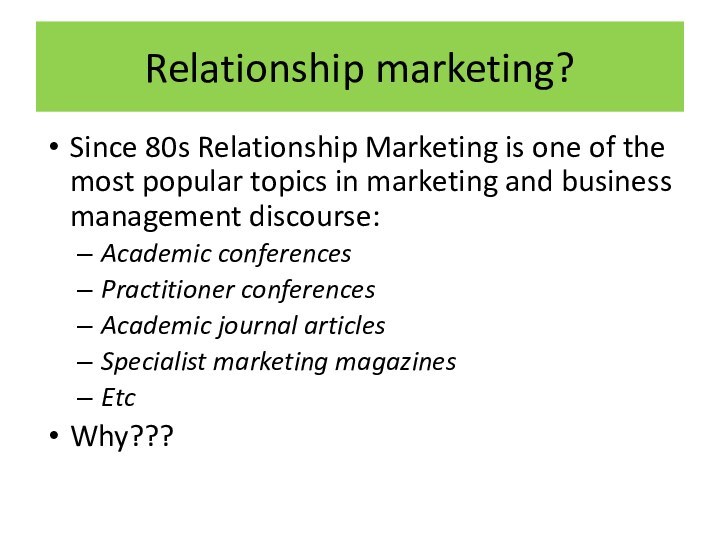
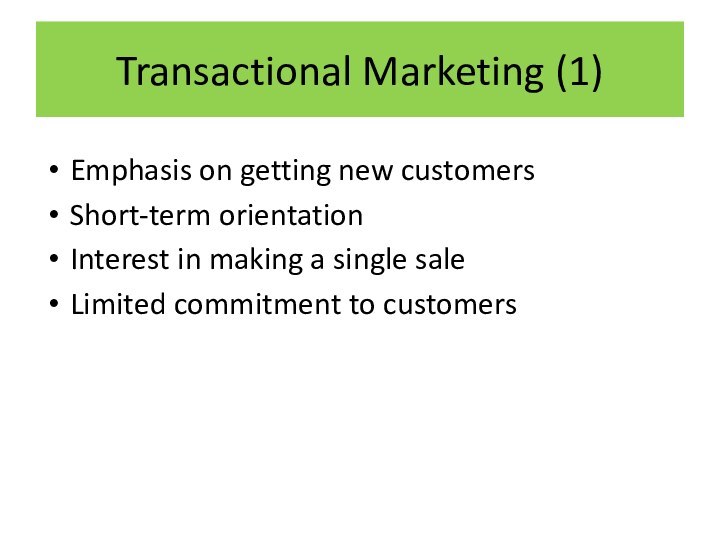
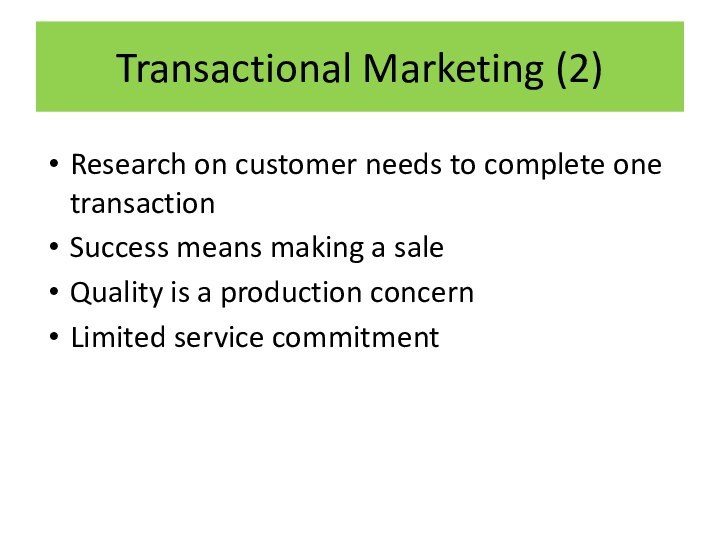


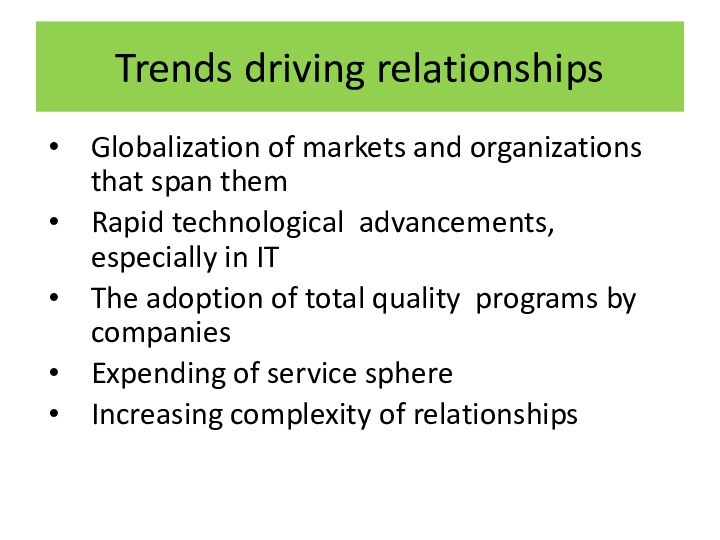
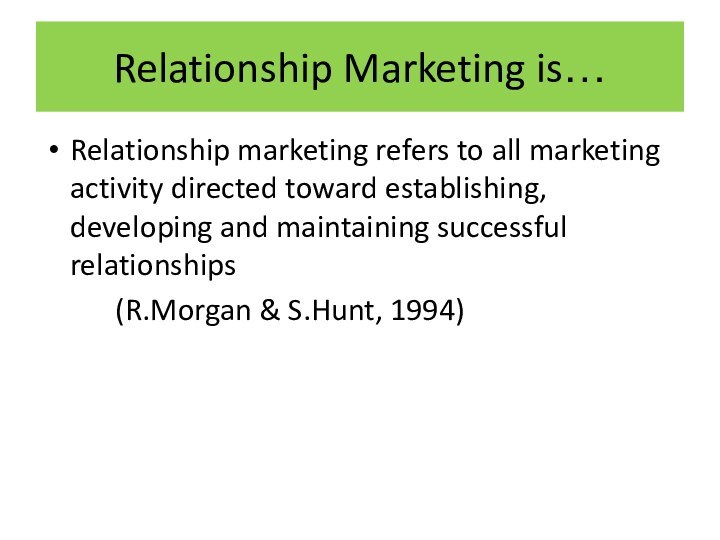
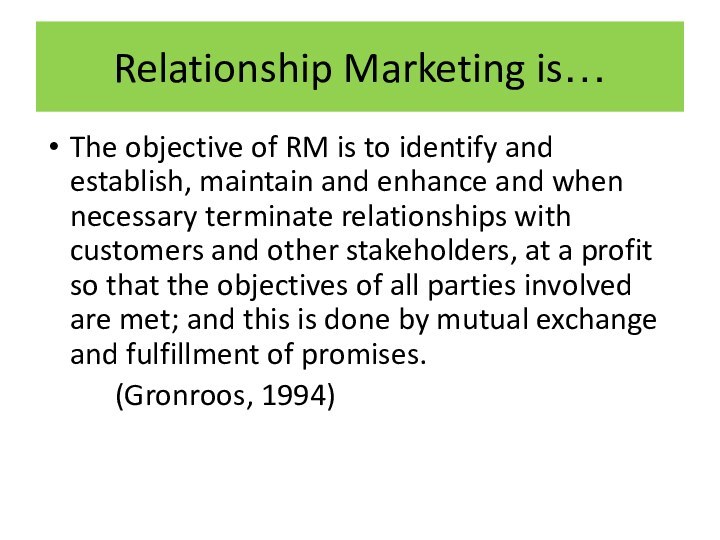
![Курс “Логистика” Relationship Marketing DomainBusiness/customer partneringCompany relationshipsCatch-all category[Brodie et al., 1997]Database marketing](/img/tmb/13/1299357/20574df8d1dce167549d818ca40a65eb-720x.jpg)
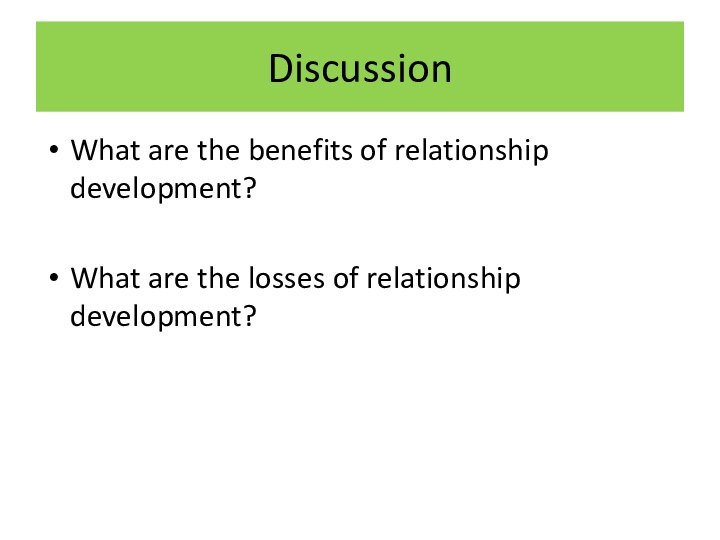


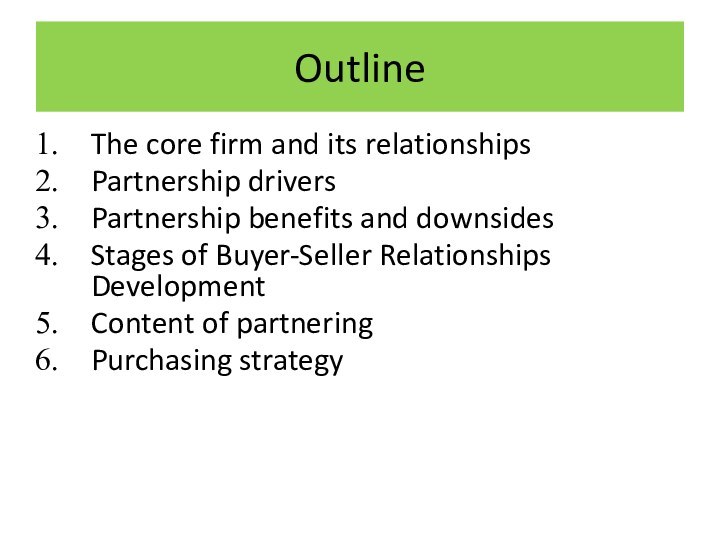
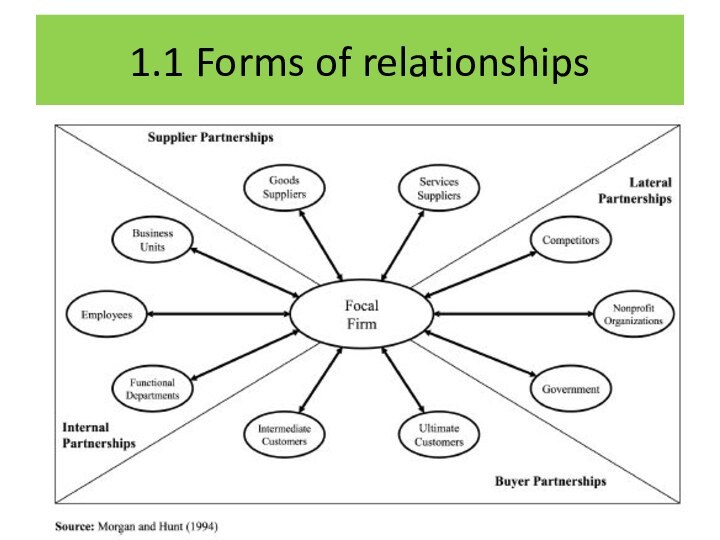
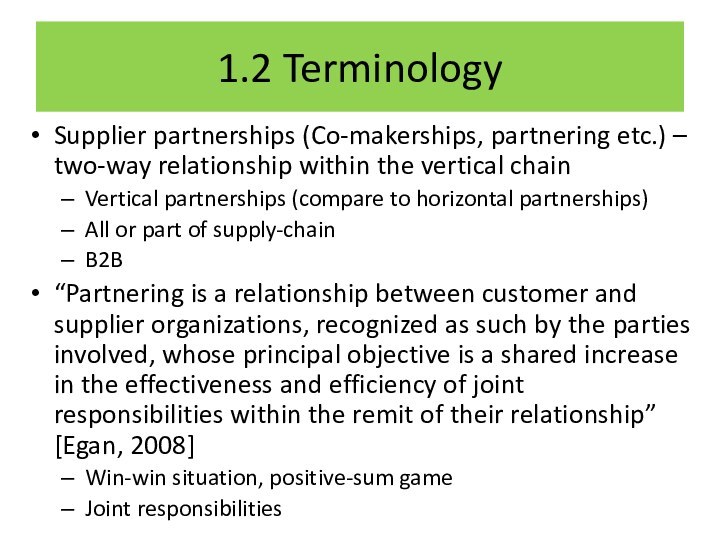
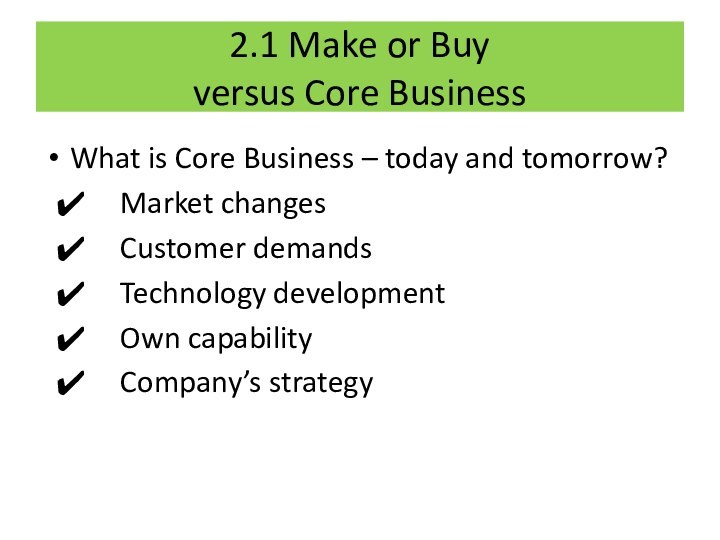
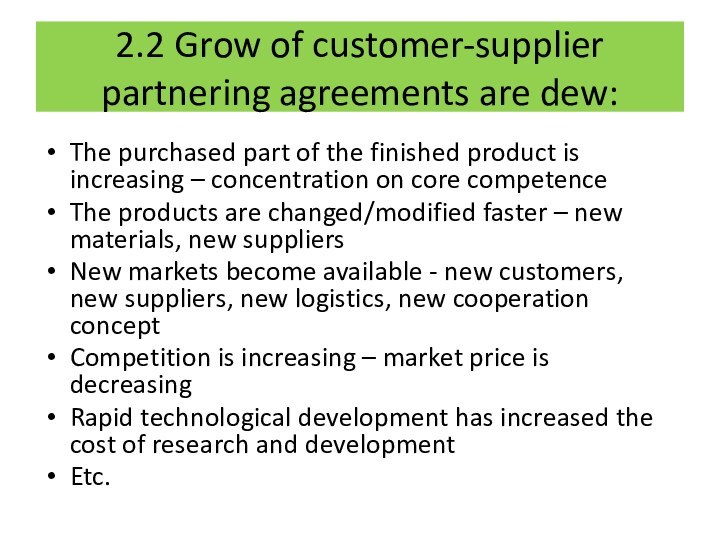
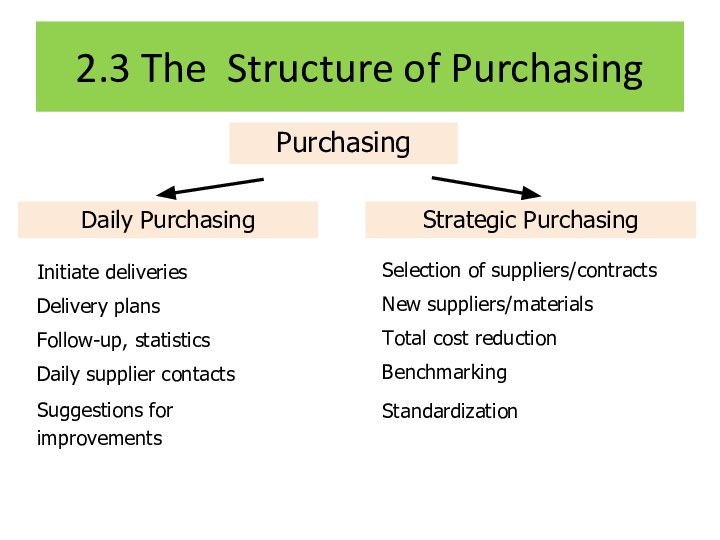
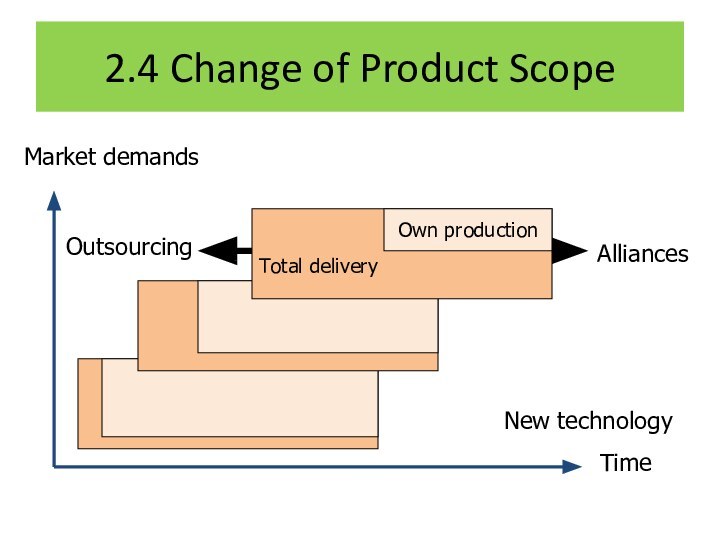
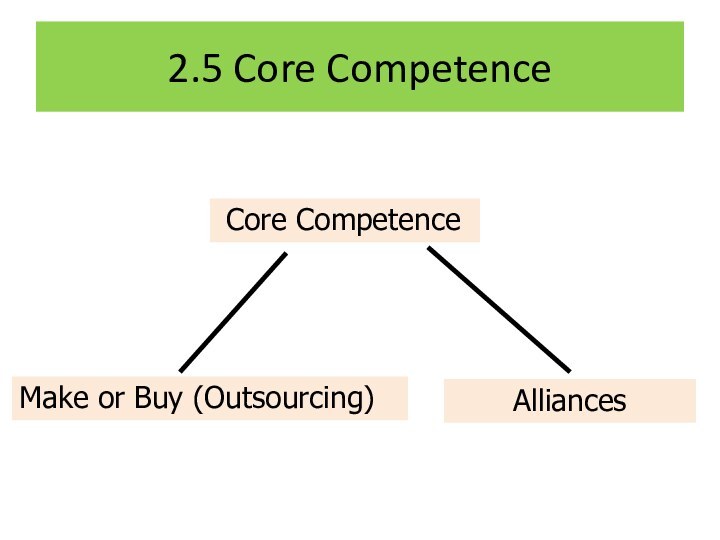
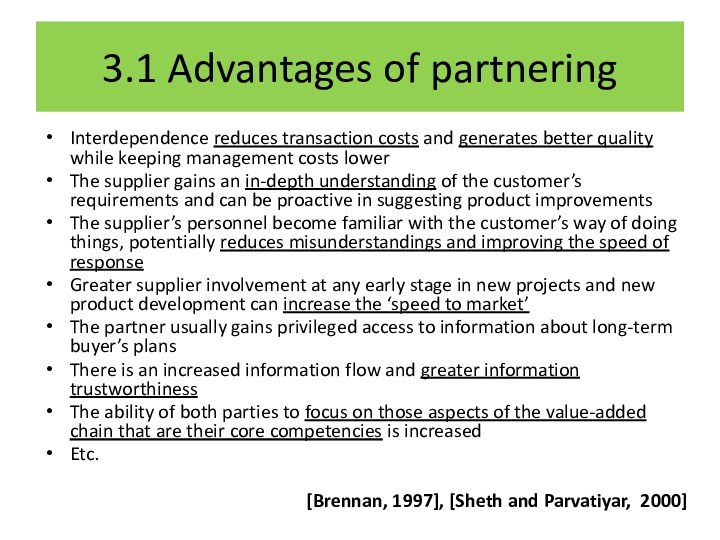
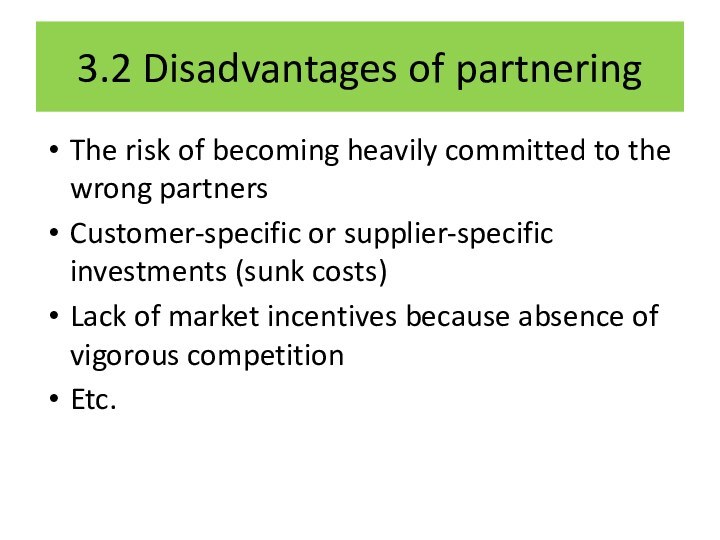
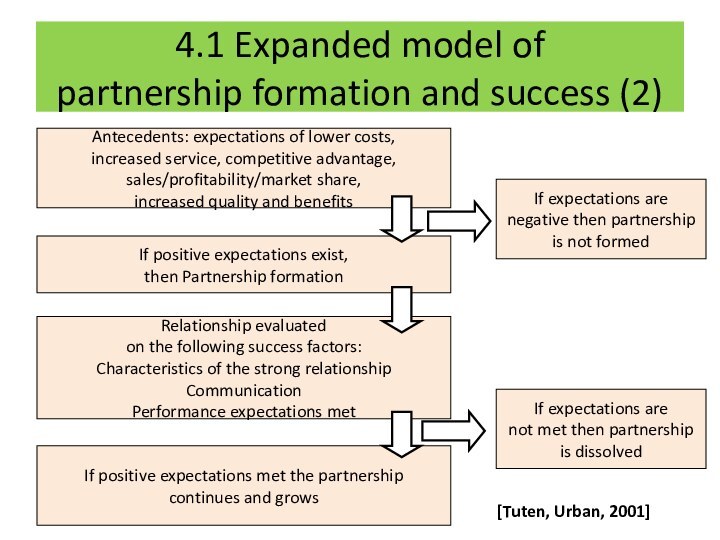
![Курс “Логистика” 4.2 Model of relationship development process [Wilson, 1995] (1)Partner selectionExploration stage in](/img/tmb/13/1299357/5c46ad30ac7f6793c0f01fbf8df8fd5b-720x.jpg)
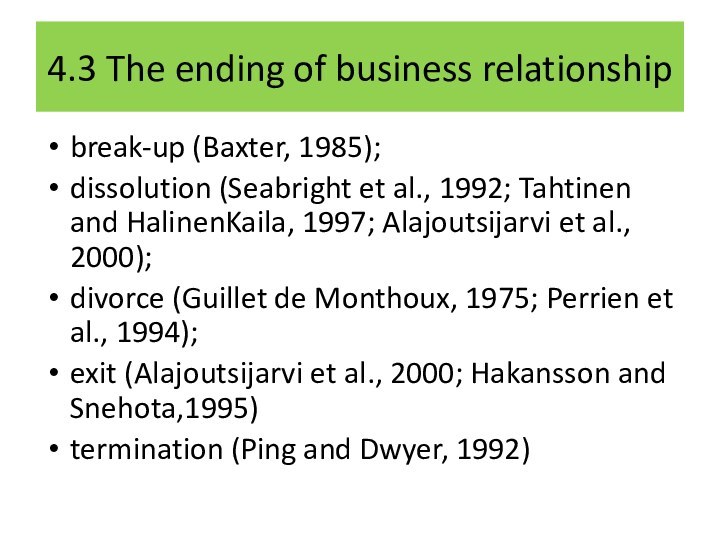

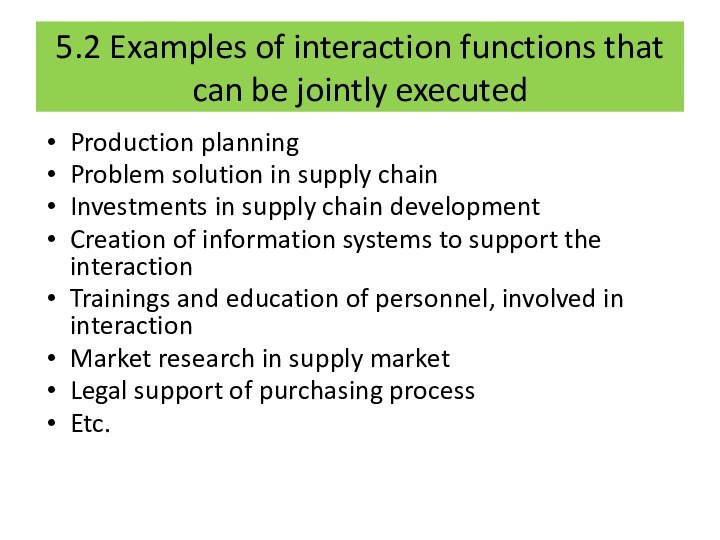
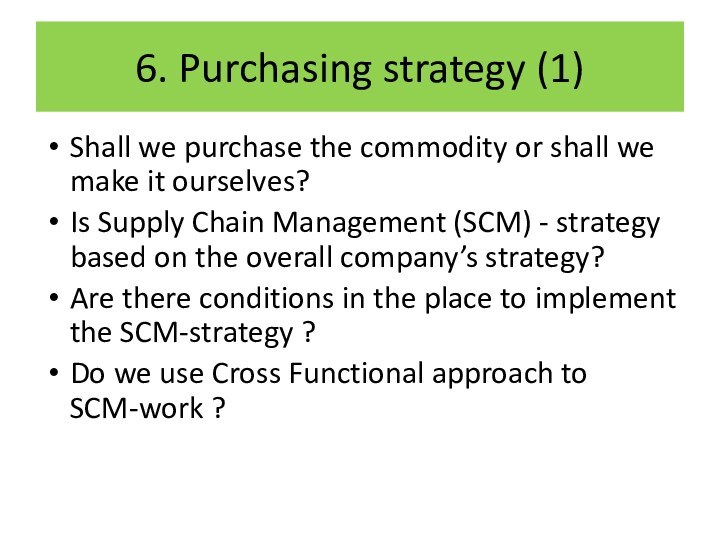
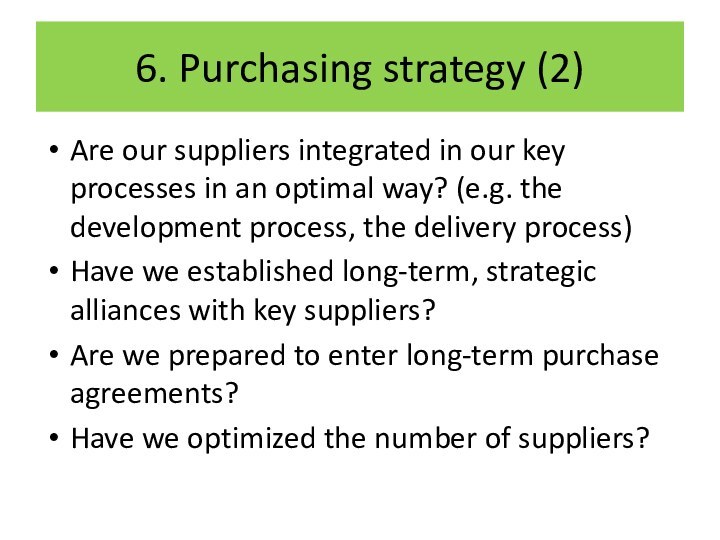
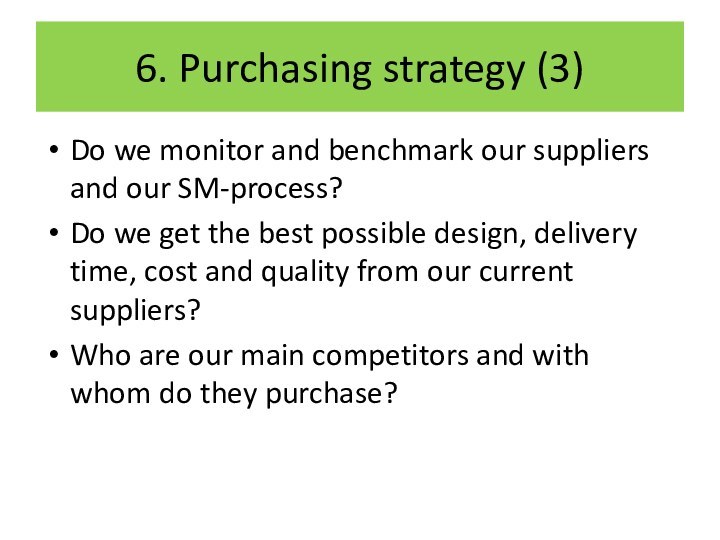
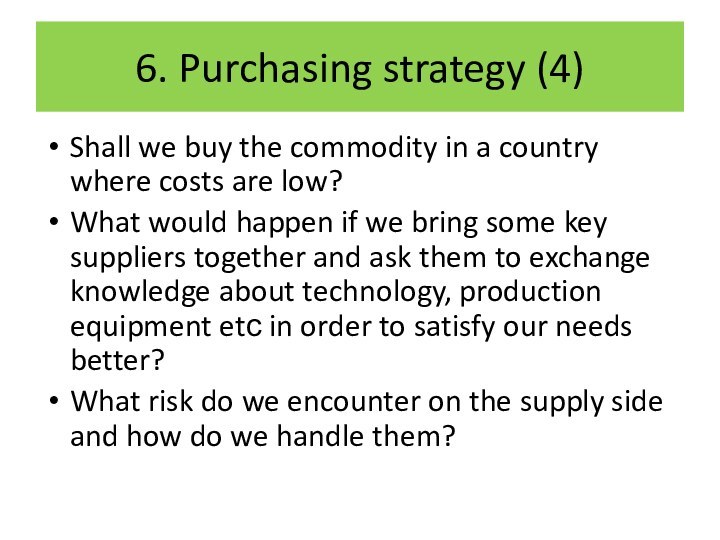
Слайд 2
Основное из Лекции 1
Определение логистики
Этапы развития логистики
Логистический материальный
поток
в логистике
Слайд 4
Методологический аппарат логистики
Методы системного анализа
Методы теории исследований операций
Кибернетический
подход
Прогностика
Методы моделирования
Цель:
Прогнозировать материальные потоки
Создавать интегрированные системы управления
и контроляРазрабатывать системы логистического обслуживания
Оптимизировать запасы и проч.
Слайд 5
1. Анализ полной стоимости
учет всех экономических изменений, возникающих
при каких-либо изменениях в логистической системе
идентификация всех затрат в
логистической системе и такая их перегруппировка, которая позволит уменьшить суммарные затраты.-> возможность повысить затраты в одной области, если в целом по системе это приведет к экономии – это интегрированный подход к логистике
Слайд 6
«Айсберг» полных затрат
Необходимы специальные знания и учет косвенных
затрат
Пример применения метода:
Выбор между приобретением собственного склада и использованием
склада общего пользования
Слайд 7
2. Моделирование в логистике
Прогноз поведения процесса или системы
(«Что будет, если….?»)
-> важна степень подобия модели моделируемому объекту
Слайд 9
3. Экспертные системы
специальные компьютерные программы, помогающие специалистам принимать
решения, связанные с управлением материальными потоками:
Принятие решение быстро
Обучение персонала
в короткие срокиСохранение ноу-хау
НО: экспертным системам не хватает здравого смысла
Пример: Inventory management system ВВС США
Слайд 10
4. Показатели логистики
Средний запас на складе
Зср1 - средний
запас за 1ый период
Зн – запас на начало 1го
периодаЗк – запас на конец 1го периода
Товарооборачиваемость – характеристика процесса возобновления товарного запаса
2.1 Скорость товарооборота (Сто)
О – товарооборот за период
Зср – средний товарный запас за период
2.2 Время обращения товара
t – число дней в периоде
Слайд 11
3. Доля запасов в обороте
4. Затраты на логистику,
приходящиеся на единицу товарооборота Дл
Сл – затраты на логистику
за периодО – товарооборот за период
5. Грузооборот склада (мощность склада)
Q – количество тонн на складе за период Т
Т – продолжительность периода времени
Показатели логистики
Слайд 12
Функциональные области логистики
Закупочная логистика
Складская логистика
Производственная логистика
Распределительная логистика
Транспортная логистика
Информационная
логистика
Почему в России закупочная логистика развита слабо?
Слайд 13
Закупочная логистика
На тактическом уровне: ежедневные операции с закупками
с целью избежания дефицита или отсутствия необходимого товара
На стратегическом
уровне: процесс управления закупками, связи и взаимодействия с другими отделами компании, внешними поставщиками, разработка новых закупочных схем и методов и проч.
Слайд 14
Цели службы снабжения
Устанавливать взаимоотношения с поставщиками – «ввязывание»
предприятия в макрологистическую систему
Ориентация на партнерские долгосрочные отношения
Общность интересов
и целейСоблюдение обязательств
2. Интеграция в микрологистическую систему
Согласованность действий с производством и сбытом
Реализация маркетинговой стратегии
Слайд 15
Вопросы закупочной логистики
Что закупить?
Сколько закупить?
У кого закупить?
На каких
условиях?
И как все это связать с производством и деятельность
предприятия с поставщиками?
Слайд 17
Выбор поставщика
Объявление конкурса
Ярмарки, конференции
Переписка, рекламные материалы
Критерии:
Удаленность
Сроки выполнения заказов
Наличие
резервных мощностей
Контроль качества
Кредитоспособность и проч.
Слайд 19 Спрос на одном участке цепи определяется спросом, предъявленном
в ее конце
- это система производства и поставки комплектующих
или товаров к месту производственного потребления или к моменту продажи в торговом предприятии в требуемом количестве и в нужное времяСистема поставок «Точно в срок»
Слайд 21
Сложности на пути к ТВС
Требования потребителя к качеству
Сокращение
степени диверсификации
Удаленность потребителя
Расписание поставок
Размер партии и периодичность поставки
Слайд 22
Метод быстрого реагирования
Технологии метода:
Автоматическая идентификация штриховых товарных кодов
Электронный
обмен данными
Автоматическая идентификация грузовых единиц (например, транспортировочных контейнеров)
Новая
концепция бизнеса – дух партнерства и сотрудничества между организациями
Слайд 25
Analysis of Internal Resources - The Value Chain
Michael
E. Porter, Changing Patterns of International Competition, California Management
Review, Volume XXViII, Number 2, Winter 1986
Слайд 26
Analysis of the External Environment:
Porter’s 5 forces
Source: Porter
(1979) How Competitive Forces Shape Strategy. Harvard Business Strategy,
March/April 1979.
Слайд 27
Strategy at the functional level
Source: Hill & Jones
(2009): Theory of Strategic Management with Cases. South-Western.
Слайд 32
Key points
Transactions versus relationships.
Trends driving relationships.
Relationship
marketing definitions.
The domain and dimensions of relationship marketing.
Слайд 33
Relationship marketing?
Since 80s Relationship Marketing is one of
the most popular topics in marketing and business management
discourse:Academic conferences
Practitioner conferences
Academic journal articles
Specialist marketing magazines
Etc
Why???
Слайд 34
Transactional Marketing (1)
Emphasis on getting new customers
Short-term orientation
Interest
in making a single sale
Limited commitment to customers
Слайд 35
Transactional Marketing (2)
Research on customer needs to complete
one transaction
Success means making a sale
Quality is a
production concernLimited service commitment
Слайд 36
Customer is a key in RM
Emphasis on keeping
customers as well as getting new ones
Interest in multiple
sales and enduring relationships (Long-term orientation, Lifetime value)High level of ongoing commitment to customers
Continuing research in customer need to enhance relationship
Success means customer loyalty, repeat purchases, customer recommendations, and low customer turnover
Слайд 37
Discussion
What are the main factors of RM development
in the world today?
Please classify the factors in the
today’s economy, leading to the need for RM…
Слайд 38
Trends driving relationships
Globalization of markets and organizations that
span them
Rapid technological advancements, especially in IT
The adoption of
total quality programs by companies Expending of service sphere
Increasing complexity of relationships
Слайд 39
Relationship Marketing is…
Relationship marketing refers to all marketing
activity directed toward establishing, developing and maintaining successful relationships
(R.Morgan & S.Hunt, 1994)
Слайд 40
Relationship Marketing is…
The objective of RM is to
identify and establish, maintain and enhance and when necessary
terminate relationships with customers and other stakeholders, at a profit so that the objectives of all parties involved are met; and this is done by mutual exchange and fulfillment of promises.(Gronroos, 1994)
Слайд 41
Relationship Marketing Domain
Business/customer partnering
Company relationships
Catch-all category
[Brodie et al.,
1997]
Database marketing
Слайд 42
Discussion
What are the benefits of relationship development?
What are
the losses of relationship development?
Слайд 43
General properties of relationships
Collaboration
Commitment, dependency and importance
Trust, risk
and uncertainty
Power
Frequency, regularity, intensity
Closeness and remoteness
Formality, informality and openness
Routinization,
etc.
Слайд 45
Outline
The core firm and its relationships
Partnership drivers
Partnership benefits
and downsides
Stages of Buyer-Seller Relationships Development
Content of partnering
Purchasing strategy
Слайд 47
1.2 Terminology
Supplier partnerships (Co-makerships, partnering etc.) – two-way
relationship within the vertical chain
Vertical partnerships (compare to
horizontal partnerships)All or part of supply-chain
B2B
“Partnering is a relationship between customer and supplier organizations, recognized as such by the parties involved, whose principal objective is a shared increase in the effectiveness and efficiency of joint responsibilities within the remit of their relationship” [Egan, 2008]
Win-win situation, positive-sum game
Joint responsibilities
Слайд 48
2.1 Make or Buy
versus Core Business
What is
Core Business – today and tomorrow?
Market changes
Customer demands
Technology development
Own
capabilityCompany’s strategy
Слайд 49 2.2 Grow of customer-supplier partnering agreements are dew:
The purchased part of the finished product is increasing
– concentration on core competence The products are changed/modified faster – new materials, new suppliers
New markets become available - new customers, new suppliers, new logistics, new cooperation concept
Competition is increasing – market price is decreasing
Rapid technological development has increased the cost of research and development
Etc.
Слайд 50
2.3 The Structure of Purchasing
Purchasing
Daily Purchasing
Strategic Purchasing
Initiate deliveries
Delivery
plans
Follow-up, statistics
Daily supplier contacts
Suggestions for improvements
Selection of suppliers/contracts
New
suppliers/materials Total cost reduction
Benchmarking
Standardization
Слайд 51
2.4 Change of Product Scope
Total delivery
Own production
Outsourcing
Market demands
Time
New technology
Alliances
Слайд 53
3.1 Advantages of partnering
Interdependence reduces transaction costs and
generates better quality while keeping management costs lower
The supplier
gains an in-depth understanding of the customer’s requirements and can be proactive in suggesting product improvementsThe supplier’s personnel become familiar with the customer’s way of doing things, potentially reduces misunderstandings and improving the speed of response
Greater supplier involvement at any early stage in new projects and new product development can increase the ‘speed to market’
The partner usually gains privileged access to information about long-term buyer’s plans
There is an increased information flow and greater information trustworthiness
The ability of both parties to focus on those aspects of the value-added chain that are their core competencies is increased
Etc.
[Brennan, 1997], [Sheth and Parvatiyar, 2000]
Слайд 54
3.2 Disadvantages of partnering
The risk of becoming heavily
committed to the wrong partners
Customer-specific or supplier-specific investments (sunk
costs)Lack of market incentives because absence of vigorous competition
Etc.
Слайд 55 4.1 Expanded model of partnership formation and success
(2)
[Tuten, Urban, 2001]
Antecedents: expectations of lower costs,
increased
service, competitive advantage,
sales/profitability/market share,
increased quality and benefitsIf positive expectations exist,
then Partnership formation
Relationship evaluated
on the following success factors:
Characteristics of the strong relationship
Communication
Performance expectations met
If positive expectations met the partnership
continues and grows
If expectations are
negative then partnership
is not formed
If expectations are
not met then partnership
is dissolved
Слайд 56 4.2 Model of relationship development process [Wilson, 1995]
(1)
Partner selection
Exploration stage in Dwyer and Schurr’s model
Defining purpose
Tradeoff
between mutual and individual goalsSetting relationship boundaries
degree to which each partner penetrates the other organization
Creating relationship value
Competitive abilities of the partners are enhanced being in the relationship
Relationship maintenance
Activities aimed at broadening the scope of relationships, increasing its longevity, level of parties' involvement etc.
Слайд 57
4.3 The ending of business relationship
break-up (Baxter, 1985);
dissolution
(Seabright et al., 1992; Tahtinen and HalinenKaila, 1997; Alajoutsijarvi
et al., 2000);divorce (Guillet de Monthoux, 1975; Perrien et al., 1994);
exit (Alajoutsijarvi et al., 2000; Hakansson and Snehota,1995)
termination (Ping and Dwyer, 1992)
Слайд 58
5.1 Power and dependency
Power imbalance results in one
partner’s dependence (Dominant vs. Dependent)
In reality balance of power
(balanced dependence) is rarely symmetrical opportunities for one party to pursue short-term advantageAdvantages of symmetrical dependence:
Mutual safeguard
Collective incentive to maintain a relationship
Constructive conflict resolution
Joint problem solving
Etc.
What factors lead to one party’s dominance?
Слайд 59 5.2 Examples of interaction functions that can be
jointly executed
Production planning
Problem solution in supply chain
Investments in
supply chain developmentCreation of information systems to support the interaction
Trainings and education of personnel, involved in interaction
Market research in supply market
Legal support of purchasing process
Etc.
Слайд 60
6. Purchasing strategy (1)
Shall we purchase the commodity
or shall we make it ourselves?
Is Supply Chain Management
(SCM) - strategy based on the overall company’s strategy?Are there conditions in the place to implement the SCM-strategy ?
Do we use Cross Functional approach to SCM-work ?
Слайд 61
6. Purchasing strategy (2)
Are our suppliers integrated in
our key processes in an optimal way? (e.g. the
development process, the delivery process)Have we established long-term, strategic alliances with key suppliers?
Are we prepared to enter long-term purchase agreements?
Have we optimized the number of suppliers?
Слайд 62
6. Purchasing strategy (3)
Do we monitor and benchmark
our suppliers and our SM-process?
Do we get the best
possible design, delivery time, cost and quality from our current suppliers?Who are our main competitors and with whom do they purchase?
